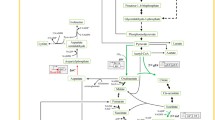Abstract
Corynebacterium crenatum SYPA is an aerobic and industrial l-arginine producer. A lysE deletion mutant was constructed searching a natural function of this in C. crenatum SYPA. Tracking determination of intracellular and extracellular l-arginine in the minimum culture CGXII showed that LysE did play an important role in transporting l-arginine from intracellular to extracellular, without which the accumulation of intracellular l-arginine of C. crenatum SYPA could reach an extremely high concentration. Nevertheless, the lower intracellular concentration of l-arginine could decrease the feedback inhibition in the biosynthesis of l-arginine. To improve the yield from excretion, we attempted to achieve overexpress in the l-arginine transporter in C. crenatum SYPA. Thus, the heterologous and homologous expressions of EcargO and CclysE, respectively, were carried out by means of the shuttle plasmid pJCtac in C. crenatum SYPA. It was found that l-arginine production was improved by 13.6 % because of the overexpression of lysE in the strain (SYPA/pJCE) contrast to the wild-type strain and reached 35.9 g/L, whereas l-arginine production of the strain SYPA/pJCO was scarcely changed. Consequently, we succeeded in obtaining a mutant form of LysE which has an effect to decrease the intracellular concentration of l-arginine in an l-arginine producer of C. crenatum SYPA and found that the production of l-arginine by C. crenatum carrying lysE was improved. These results show the importance of the factor (lysE) involved in the excretion of l-arginine on its over-production in C. crenatum.



Similar content being viewed by others
References
Barbul A (1990) Arginine and immune function. Nutrition (Burbank) 6(1):53–58
Becker J, Zelder O, Hafner S, Schroder H, Wittmann C (2011) From zero to hero-design-based systems metabolic engineering of Corynebacterium glutamicum for l-lysine production. Metab Eng 13(2):159–168. doi:10.1016/j.ymben.2011.01.003
Bröer S, Krämer R (1991) Lysine excretion by Corynebacterium glutamicum energetics and mechanism of the transport system. Eur J Biochem 202:137–143
Trötschel C, Deutenberg D, Bathe B, Burkovski A (2005) Characterization of methionine export in Corynebacterium glutamicum. J Bacteriol 187(11):3786–3796. doi:10.1128/JB.187.11.3786-3794.2005
Erdmann A, Weil B, Krämer R (1993) Lysine secretion by wild-type Corynebacterium glutamicum triggered by dipeptide uptake. J Gen Microbiol 139(12):3115–3122. doi:10.1099/00221287-139-12-3115
Faurie R, Thommel J, Bathe B, Debabov V (2003) Amino acid production processes in microbial production of l-amino acids. Springer, Berlin, pp 1–35
Gunji Y, Ito H, Masaki H, Yasueda H (2006) Characterization of a unique mutant lysE gene, originating from Corynebacterium glutamicum, encoding a product that induces l-lysine production in Methylophilus methylotrophus. Biosci Biotechnol Biochem 70(12):2927–2934. doi:10.1271/bbb.60339
Gunji Y, Yasueda H (2006) Enhancement of l-lysine production in methylotroph Methylophilus methylotrophus by introducing a mutant LysE exporter. J Biotechnol 127(1):1–13. doi:10.1016/j.jbiotec.2006.06.003
Horton RM (1995) PCR-mediated recombination and mutagenesis: SOE-ing together tailor-made genes. Mol Biotechnol 3:93–99
Ikeda M (2003) Amino acid production processes. Adv Biochem Eng Biotechnol 79:1–35
Kirchner O, Tauch A (2003) Tools for genetic engineering in the amino acid-producing bacterium Corynebacterium glutamicum. J Biotechnol 104(1–3):287–299. doi:S0168165603001482
Korepanova A, Moore JD, Nguyen HB, Hua Y, Cross TA, Gao F (2007) Expression of membrane proteins from Mycobacterium tuberculosis in Escherichia coli as fusions with maltose binding protein. Protein Exp Purif 53(1):24–30. doi:10.1016/j.pep.2006.11.022
Moncada S, Palmer R, Higgs EA (1989) Biosynthesis of nitric oxide from l-arginine: a pathway for the regulation of cell function and communication. Biochem Pharmacol 38(11):1709–1715
Nandineni MR, Gowrishankar J (2004) Evidence for an arginine exporter encoded by yggA (argO) that is regulated by the LysR-type transcriptional regulator ArgP in Escherichia coli. J Bacteriol 186(11):3539–3546. doi:10.1128/jb.186.11.3539-3546.2004
Sahm H, Eggeling L (2003) New ubiquitous translocators: amino acid export by Corynebacterium glutamicum and Escherichia coli. Arch Microbiol 180(3):155–160. doi:10.1007/s00203-003-0581-0
Sambrook J, Russell DW (2001) Molecular cloning: a laboratory manual. Cold spring harbor laboratory press, New York
Schäfer A, Tauch A, Jäger W, Kalinowski J, Thierbach G, Pühler A (1994) Small mobilizable multi-purpose cloning vectors derived from the Escherichia coli plasmids pK18 and pK19: selection of defined deletions in the chromosome of Corynebacterium glutamicum. Gene 145(1):69–73
Van der Rest ME, Lange C, Molenaar D (1999) A heat shock following electroporation induces highly efficient transformation of Corynebacterium glutamicum with xenogeneic plasmid DNA. Appl Microbiol Biotechnol 52(4):541–545
Vrljic M, Sahm H, Eggeling L (1996) A new type of transporter with a new type of cellular function: l-lysine export from Corynebacterium glutamicum. Mol Microbiol 22(5):815–826. doi:10.1046/j.1365-2958.1996.01527.x
Xu H, Dou W, Xu H, Zhang X, Rao Z, Shi Z, Xu Z (2009) A two-stage oxygen supply strategy for enhanced l-arginine production by Corynebacterium crenatum based on metabolic fluxes analysis. Biochem Eng J 43(1):41–51
Xu M, Rao Z, Xu H, Lan C, Dou W, Zhang X, Xu H, Jin J, Xu Z (2011) Enhanced production of l-arginine by expression of Vitreoscilla hemoglobin using a novel expression system in Corynebacterium crenatum. Appl Biochem Biotechnol 163(6):707–719. doi:10.1007/s12010-010-9076-z
Acknowledgments
This study was supported by the Program for New Century Excellent Talents in University (NCET-10-0459), the National Basic Research Program of China (973 Program) (2012CB725202), the High-tech Research and Development Programs of China (2011AA02A211, 2012AA022102), the National Natural Science Foundation of China (21276110), the Fundamental Research Funds for the Central Universities (JUSRP51306A, JUSRP1009), the Research Fund for the Doctoral Program of Higher Education of China (20110093120001), and a Project Funded by the Priority Academic Program Development of Jiangsu Higher Education Institutions.
Author information
Authors and Affiliations
Corresponding authors
Rights and permissions
About this article
Cite this article
Xu, M., Rao, Z., Yang, J. et al. The Effect of a LYSE Exporter Overexpression on l-Arginine Production in Corynebacterium crenatum . Curr Microbiol 67, 271–278 (2013). https://doi.org/10.1007/s00284-013-0358-x
Received:
Accepted:
Published:
Issue Date:
DOI: https://doi.org/10.1007/s00284-013-0358-x




